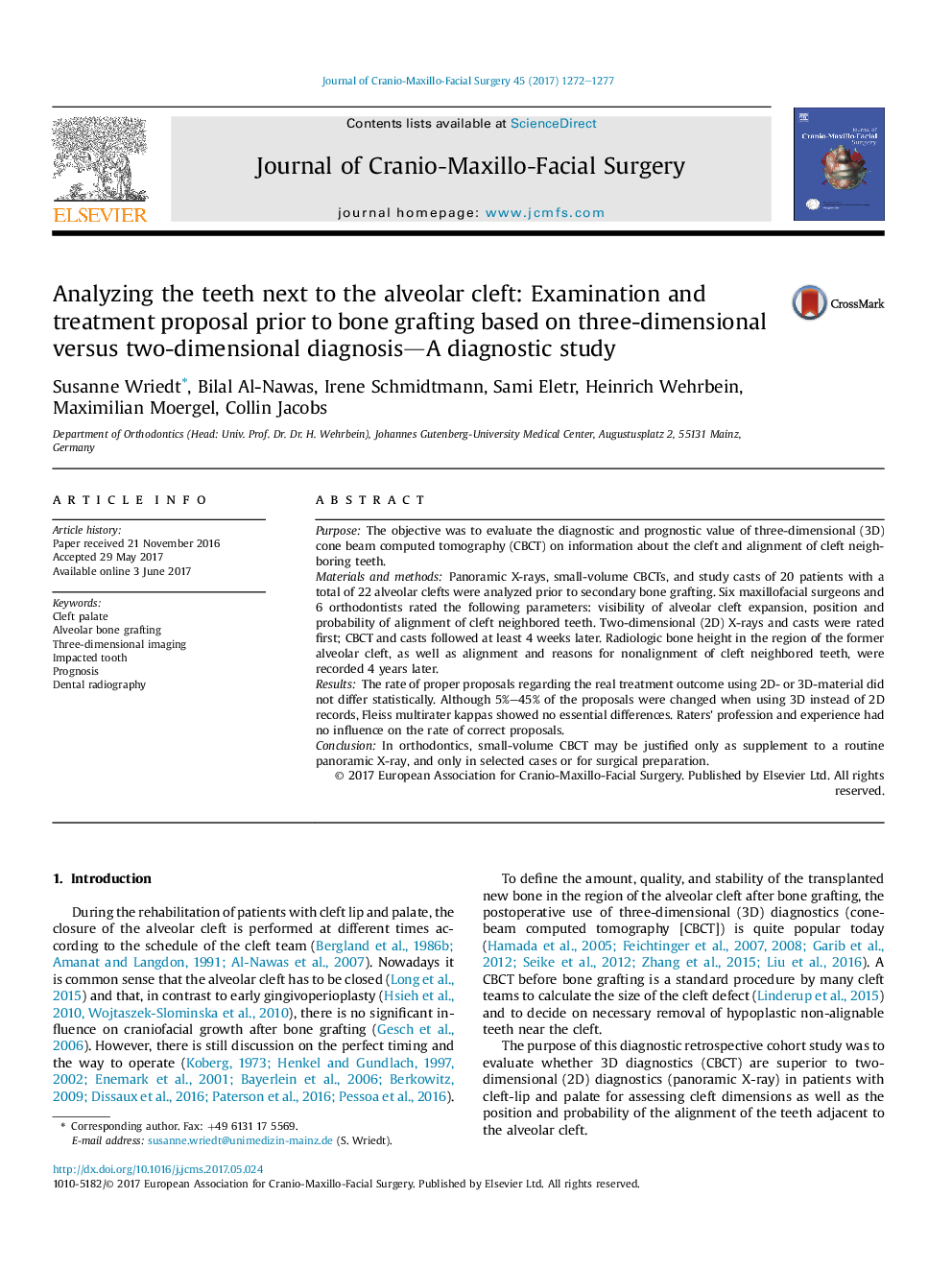| Article ID | Journal | Published Year | Pages | File Type |
|---|---|---|---|---|
| 5640072 | Journal of Cranio-Maxillofacial Surgery | 2017 | 6 Pages |
PurposeThe objective was to evaluate the diagnostic and prognostic value of three-dimensional (3D) cone beam computed tomography (CBCT) on information about the cleft and alignment of cleft neighboring teeth.Materials and methodsPanoramic X-rays, small-volume CBCTs, and study casts of 20 patients with a total of 22 alveolar clefts were analyzed prior to secondary bone grafting. Six maxillofacial surgeons and 6 orthodontists rated the following parameters: visibility of alveolar cleft expansion, position and probability of alignment of cleft neighbored teeth. Two-dimensional (2D) X-rays and casts were rated first; CBCT and casts followed at least 4 weeks later. Radiologic bone height in the region of the former alveolar cleft, as well as alignment and reasons for nonalignment of cleft neighbored teeth, were recorded 4 years later.ResultsThe rate of proper proposals regarding the real treatment outcome using 2D- or 3D-material did not differ statistically. Although 5%-45% of the proposals were changed when using 3D instead of 2D records, Fleiss multirater kappas showed no essential differences. Raters' profession and experience had no influence on the rate of correct proposals.ConclusionIn orthodontics, small-volume CBCT may be justified only as supplement to a routine panoramic X-ray, and only in selected cases or for surgical preparation.
